The Essential Guide to Crawl Space Waterproofing is what every homeowner needs to know about correcting and preventing crawl space flooding.
If you have standing water in your crawl space after heavy rains, you should read this information. It will help you determine the best solutions for crawl space waterproofing and water management.
Waterproofing Guide Table of Contents
- Waterproofing Versus Water Management
- How Does Water Enter Your Crawl Space?
- Standing Water Creates Your Crawl Space’s #1 Enemy
- Crawl Space Sump Pump
- Full Perimeter Interior French Drain
- Properly Installing the Vapor Barrier is Crucial
- Downspout Extensions and Clean Gutters
1. Defining Waterproofing and Water Management
“Waterproofing” is the industry language for addressing standing water both inside and outside the crawl space. We believe this term should only be applied to keeping the water from entering the crawl space. Normally this is accomplished during the build of the home. Installing footer drains and tar on the outside foundation wall is done to stop water intrusion. Unfortunately, due to improper installation or failed products, these systems can fail.
We call the interior french drain and sump pump systems used to control water after it has entered the crawl space a “water management system”. The water is entering the crawl space and the interior system is redirecting it out or managing where it goes. I feel that’s important for you to know so you better understand our approach in writing this Essential Guide to Crawl Space Waterproofing.
All that being said, the true title of this article should be Essential Guide to Crawl Space Water Management but we know the industry language is to use the term “waterproofing. We will cover addressing outside water issues around your home, “waterproofing”, as well as interior crawl space water issues, “water management”, in this article.
2. Why is Water Entering the Crawl Space?
A failed exterior waterproofing system is normally the reason crawl space flooding occurs, but there are other factors. Footer drains can shift or clog over time. We have seen them installed incorrectly or destroyed during landscaping projects. New homes being built near your home can also mess up the footer drain’s function.
Downspouts and gutters can add to the problem if not properly installed or they become clogged. When all the roof water is dumping near the foundation, flooding the crawl space is common. This can overtask the footer drains and the water will take the path of least resistance. Water finds the foundation wall easier to travel through than draining through saturated soil or a clogged footer drain.
The waterproofing membrane, usually tar, also fails frequently. Most builders put little effort into applying a good waterproofing membrane. The norm is a thin tar that is applied with a paint sprayer. As soon as the foundation wall settles, the tar is compromised. Thicker waterproofing membranes that are rolled on would be much more effective. The problem is the cost of material and labor to apply, making them not attractive to home builders.
Ready to find out more?
Drop us a line today for a quote!
Click Here3. Crawl Spaces #1 Enemy
The most destructive force a wet crawl space can generate is high humidity. When your crawl space is flooding and the water is left unchecked, it creates high humidity. High humidity in the crawl space can destroy your home from the bottom up.
High humidity leads to crawl space mold and wood rot fungus. The standing water in your crawl space adds to the humidity. The high humidity is absorbed by the sub-floor, joists, insulation, rim joists, and sill plate. Once the wood moisture level is around 20% or higher, mold begins to grow. If left unchecked, wood rot fungus starts to form and begins eating away at the wood in your crawl space. To learn more, make sure you check out our Essential Guide to Wood Rot Fungus.
4. Install the Best Sump Pump
The type of sump pump we install in crawl spaces and basements is very important. When choosing our preferred sump pump, here are some of the features we considered:
- Sump Pump Warranty
- Reliability
- Ease of Installation
- Flow Rate
- Materials Used
- Type of Pump
- Power Consumption
Sump Pump Warranty
The manufacturer warranty of the sump pumps we install is 5-years. We have a maintenance program to bring the warranty to a Limited Lifetime for those homeowners that want a worry-free waterproofing system.
Reliability of the Sump Pump
Having an industry-best warranty is vital, but the reliability of the pump makes sure it is actually working with little to no warranty claims. The Crawl Space Ninja Sump Pump System is extremely reliable with very few callbacks. If the pump is maintained annually per manufacturer recommendations, we have found it to be even more reliable. Making sure the sump pump is working when you need it most is vital to the health of your home.
Easy to Install Sump Pump
The Ninja Sump Pump installs easily with no confusing proprietary tools or parts needed. We wanted a pump that could be installed by a waterproofing contractor as well as the DIYer. Simple installation ensures there is no room for mistakes that can create problems in the future.
4.1 What is the Sump Pump Basin
The sump pump basin is vital to maintaining a long-lasting water management system. Many contractors and homeowners fail to see the need for a basin to house the sump pump. The basin is designed to ensure only water makes contact with the pump when properly installed and sealed. Keeping mud and other debris from the sump pump means less maintenance and less failure. The sump pump is installed inside the sump pump basin.
4.2 Where Should the Sump Pump Basin be Located?
The sump pump basin should be installed in the lowest part of the crawl space. Many professionals want to install the basin near the door or easy access point. I understand the logic behind this for maintenance purposes, but even if the lowest part of the crawl space is inconvenient to reach, more water will be removed when the basin is placed properly in the crawl space.
4.3 Sump Pump Check Valve
The check valve, or backflow preventer, is needed on every sump pump. It saves your pump from wear and tear by preventing it from running continuously. As mentioned above, when the pump is located in the lowest part of the crawl space it has to force the water up and out. When your pump needs to carry water several feet up to reach daylight and the pump turns off, the water stored in the rising PVC pipe will flow right back into the basin without a check valve. This will cause the sump pump to cycle again and again. Save your pump by installing a check valve.
4.4 Waterproofing to Remove Water from Vapor Barrier
Creating a sealed waterproofing or water management system in your crawl space does not remove water from the top of the vapor barrier. Contractors can seal the basin to keep water from plumbing leaks, pipe bursts, or a flooded crawl space door from entering the sump pump.
Installing a Dranjer Drain in the lid of the sump pump basin is a great way to avoid this problem. You can also install drain ports along the french drain, but they allow soil gases to escape more easily. The Dranjer Drain is designed to keep dangerous soil gases out of your crawl space.
4.5 Maintaining Your Sump Pump
Sump pump maintenance is recommended annually. Crawl Space Ninja offers annual service agreements to maintain your sump pump while extending the warranty. Just like your HVAC system or car, not performing maintenance can void the warranty and cause premature failure. Maintenance includes testing the pump, flushing it, removing debris from the basin, and removing zooglea from the sump pump. The sump pump part that fails the most often is the float switch. If you need to fix your float switch, click here.
Ready to find out more?
Drop us a line today for a quote!
Click Here4.6 The Overlooked Sump Pump Battery Back-up
Imagine you have done all the work in this Essential Guide to Crawl Space Waterproofing and you fail to install the battery back-up for the sump pump. Storms cause power outages and flooding. During storms and heavy flooding, it is imperative your sump pump and water management system are functional. Please invest in a pump battery backup, you will be glad you did.
The Best Sump Pump Battery Backup
We do not use or install dual pump battery backup systems. Here is an in-depth article explaining why we only use and recommend the SEC Pump Sentry Battery Back-up System. The 3 main reasons we use the SEC Pump Sentry 822PS and 1622PS on our sump pumps to protect crawl spaces and basements are:
- Uses the main pump and not a less powerful pump when you need it most.
- The primary sump pump works but secondary pumps only turn on with power loss. Inactivity of pumps leads to failure.
- Pump Sentry trickle charges the battery and can have more than one battery for a longer run time.
4.7 Never Pump Discharge Water into Sewer
Crawl space contractors find discharging sump pump water into the sewer to be easy and convenient. Discharging sump pump water in the sewer can cause sewage back-ups and unnecessary flooding of the basement or crawl space. Never allow your crawl space contractor to install the sump pump discharge line into the sewer. In some areas, local municipalities will fine you if they discover you are doing this. Always run discharge water from your water management system to a pop-up emitter in your yard. Make sure the water flows downhill and away from your home.
4.8 Water Alarms Warn if Your Crawl Space Floods
Not knowing that your crawl space has been flooding for days, week, months, or years can cause serious structural and mold damage. Most experts agree that mold in the crawl space can start growing within 48 hours. Flooded crawl spaces create humidity which leads to mold growth. Having your crawl space encapsulated and waterproofed works great at addressing high humidity and flooding. If your sump pump or crawl space dehumidifier fails, you need to know it immediately.
You can install simple water alarms that sit on the basin lid or vapor barrier. These alarms give off a high pitch noise if they come in contact with water. They are great to use around your toilets, HVAC drip pan, washing machine, and water heater too.
The Smart WIFI Outlet is specifically designed for sump pumps. It will communicate via text if your sump pump loses power. This is a great product to use with the Pump Sentry Battery Back-up as an extra layer of protection to your waterproofing system.
5. Install a Full Perimeter Interior French Drain
Many crawl space contractors base their installations on price versus quality and this is one area they offer a cheaper, lesser-quality solution to crawl space waterproofing. To make sure your crawl space is dry and worry-free is to install a full perimeter water management system that drains directly to your sump pump.
Gravity Fed Discharge Systems from Crawl Space
We do not install discharge systems that gravity feed outside the crawl space. These types of systems get damaged by landscaping projects or lawnmowers over time. The sump pump with the full perimeter french drain system is a better solution.
Crawl Space Waterproofing Installation Tips
The full perimeter waterproofing system should be installed near the soil surface, unlike interior basement waterproofing that is typically installed at the footer. The crawl space surface water is your biggest cause of flooding coming in at the dirt level of the foundation wall. Burying the drainpipe at the footer of the crawl space in a clay soil environment slows the drainage process. Taking on floodwaters can overrun the drain pipe and float your vapor barrier.
Installing a full perimeter system will ensure all sides of the crawl space are protected. Larger crawl spaces will need a full sump pump system every 140 linear feet. This will make sure the large amounts of floodwater access the sump pump quickly for discharge to the outside.
Redoing Waterproofing Costs Even More
Neglecting a full perimeter crawl space waterproofing system may cost you hundreds or thousands of dollars in repairs. The flooded vapor barrier will need to be replaced if the system is overrun. Also, the crawl space dehumidifier could be destroyed by heavy floodwaters. Not to mention the labor and material cost increases if this is corrected several years after the initial install.
6. Crawl Space Vapor Barrier is Crucial
Another often overlooked part of a crawl space waterproofing system is installing a new vapor barrier. Most contractors will install french drains and sump pumps but want to leave the old loose-laid vapor barrier.
A properly install crawl space vapor barrier will cover the entire floor area. It should be mechanically fastened to the walls and pillars. The seams should be overlapped a minimum of 6-inches and sealed with crawl space seam tape. A properly installed vapor barrier underlayment can help heavy floodwaters move quickly under the plastic to the drain system. This is the best way to keep the floodwaters under the crawl space plastic and force it into the water management system. Once the water is on top of the vapor barrier, it cannot access the waterproofing system.
7. Exterior Waterproofing – Downspout Extensions and Clean Gutters
Addressing the crawl space flooding on the inside is important, but there are things you should do on the outside of your home as well. Extending downspouts is a great way to get roof water off your foundation. Tasking your crawl space waterproofing system with roof water causes unnecessary wear and tear and is totally avoidable. Keeping the gutters clean is the only way to make sure the roof water enters the downspouts. Make sure downspout extensions go downhill away from your home. Pop-up emitters are great ways to keep the lawnmower from damaging the extensions.
Lastly, an exterior french drain or curtain drain may be helpful. If your home is on a hill and rainwater runs against your home, capture that runoff with a shallow french drain installed in your yard. In our experience, an exterior french drain alone will not repair a crawl space that is already flooding. But it will assist the interior water management system and help to keep your crawl space dry.
Schedule a Crawl Space Encapsulation Assessment!
Do you need help with crawl space encapsulation in Alabama, Georgia, Delaware, North Carolina, Tennessee, Kentucky, or South Carolina? If so, please contact us to schedule your assessment.
Also, let us know in the comments below if you’d like to suggest a future blog post.
DIY Crawl Space Repair
Perhaps you’d like to tackle your own crawl space repair. Visit our DIY Store.
Join Crawl Space Ninja as an Owner
Learn about Crawl Space Ninja Franchise opportunities.
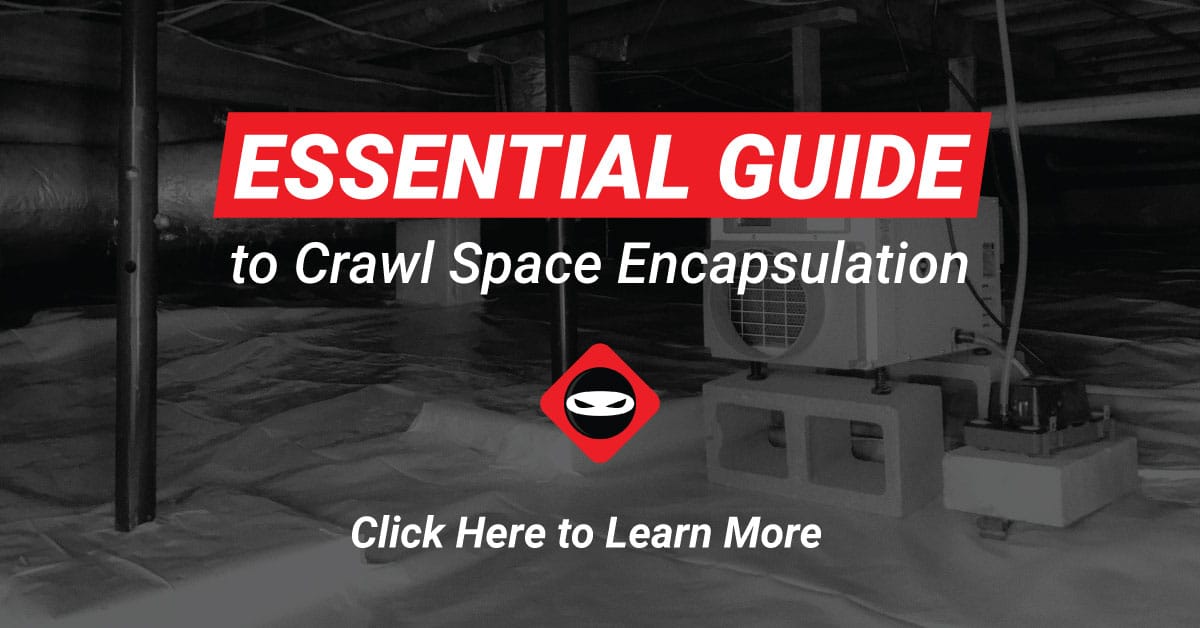




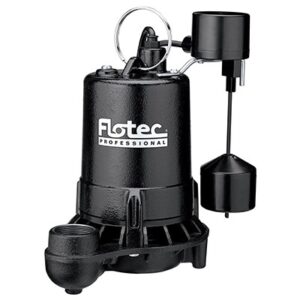
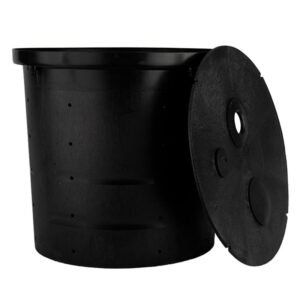

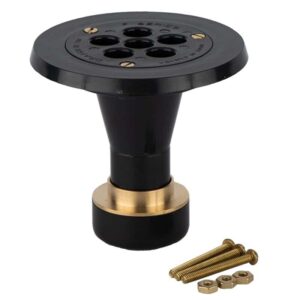


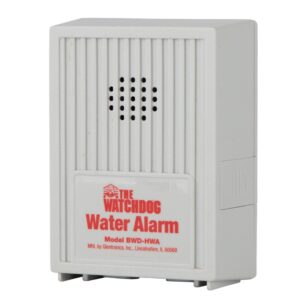

1 thought on “Essential Guide to Crawl Space Waterproofing”
I would reinforce that the quality of materials matters! Don’t trust just anyone to use quality products. Just like craftsmanship, there is a clear proportionality between the quality of product and the quality of waterproofing.
Michael Church: thank you for yet another installment in a series of definitive crawl space guides!